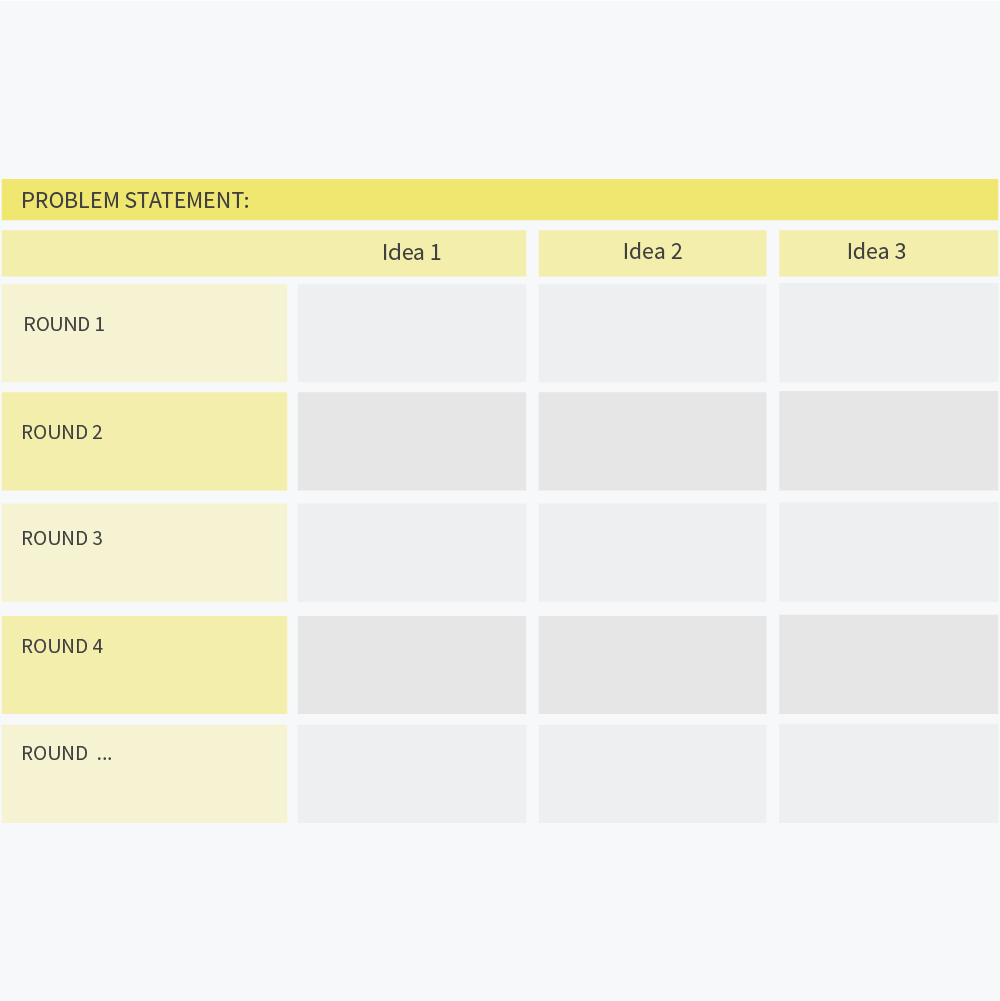Fantasy sharing
Why?
This method enables the students to share their ideas without the fear of being judged by others, whilst still keeping the benefit of the collective group dynamics, as the students can either build on previous ideas or come up with something new.
How?
The teacher asks the students to individually quote the defined problem at the top of a sheet of paper and draw three columns beneath. Within the next 3-5 minutes, each student writes an idea in each of the columns on the paper. When time runs out, the teacher collects the papers, and hands them back, randomly. Now, the teacher asks the students to write three additional ideas, under the existing row. This activity continues until new ideas do not show up any longer. During the process, the students are not allowed to use verbal communication
Tips
The SketchPad is the visual counterpart to this method. By activating a different part of the brain, visualization can sometimes help the students to understand their ideas better than words.
Literature
Higgins, J. M. (1994). 101 Creative Problem Solving Techniques: The Handbook of New Ideas for Business. New York, NY: New Management Publishing Company

